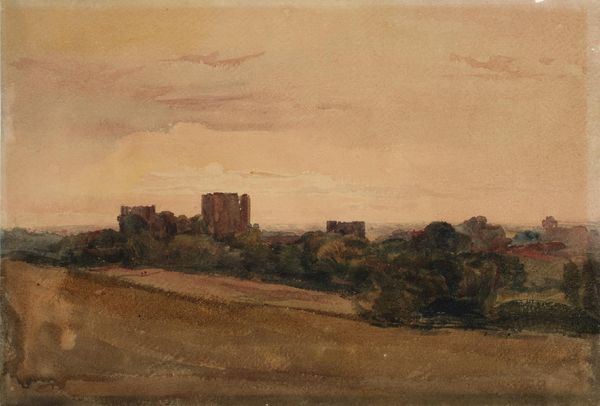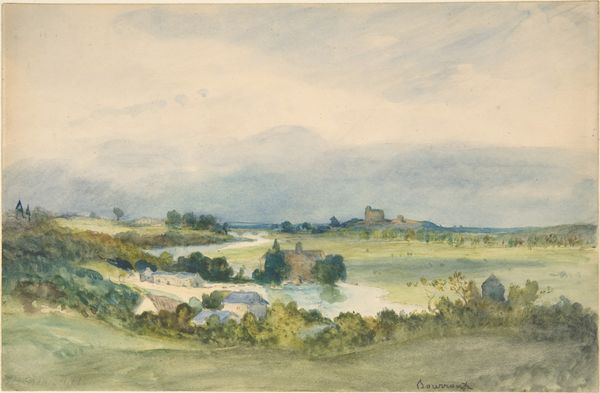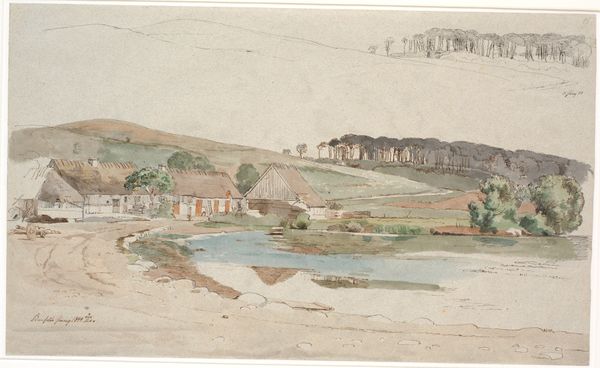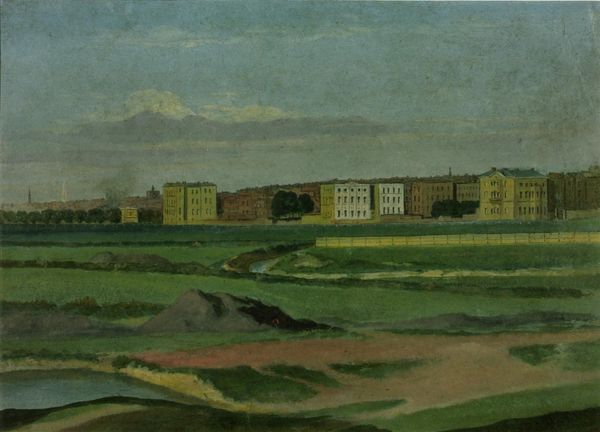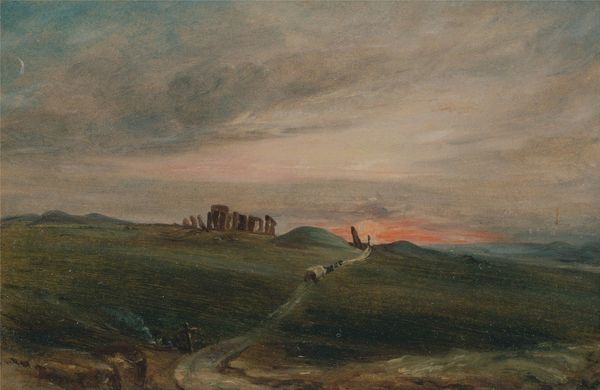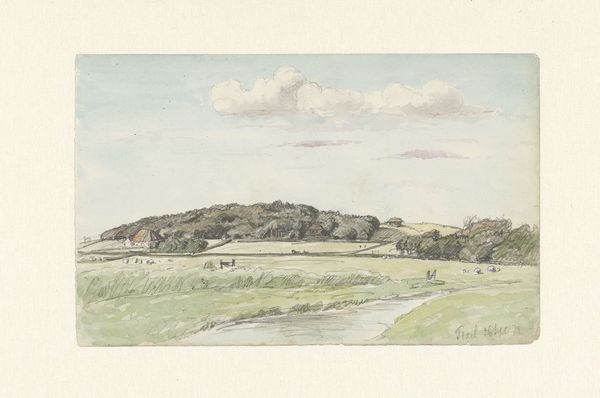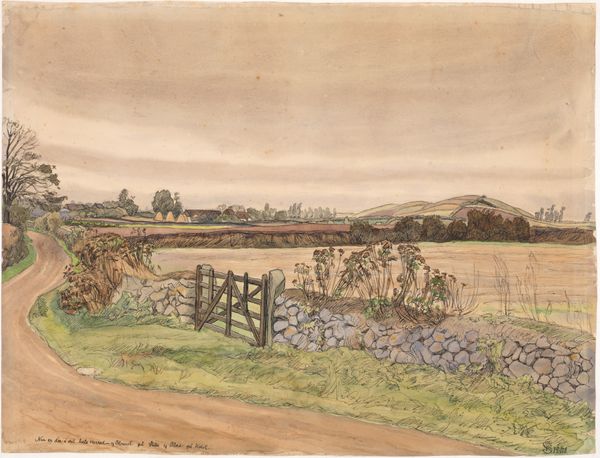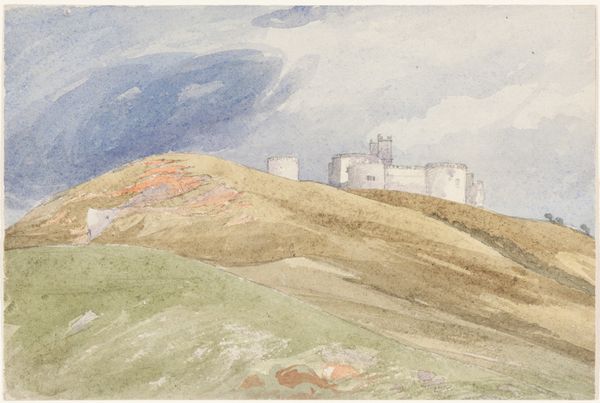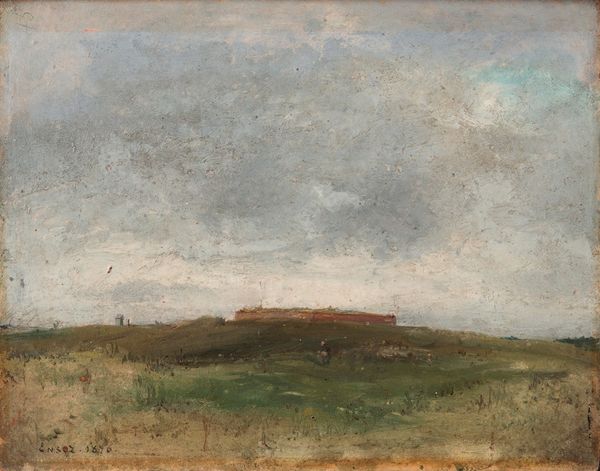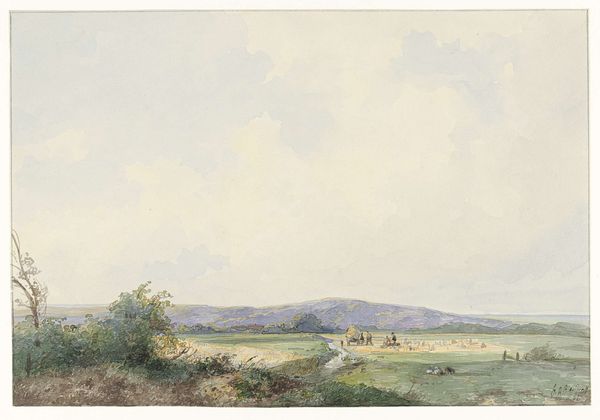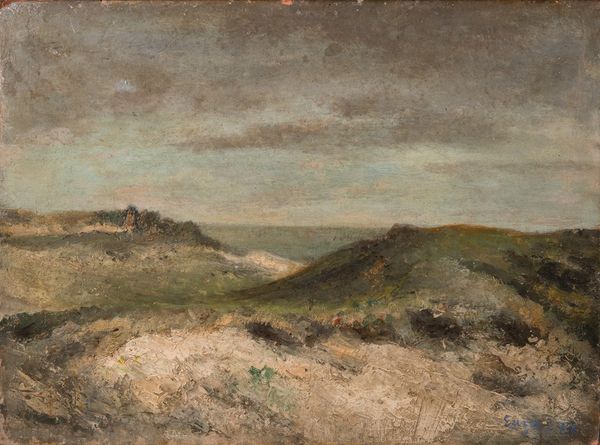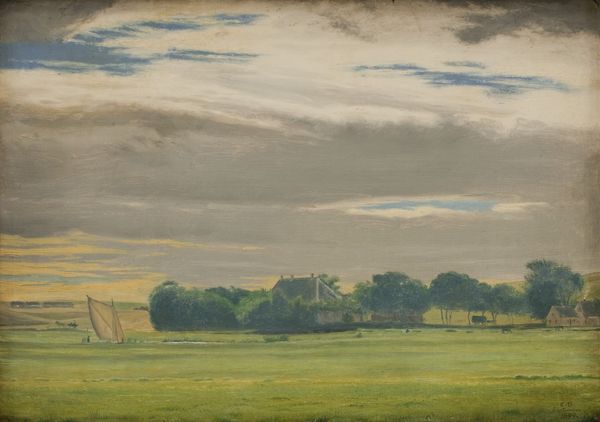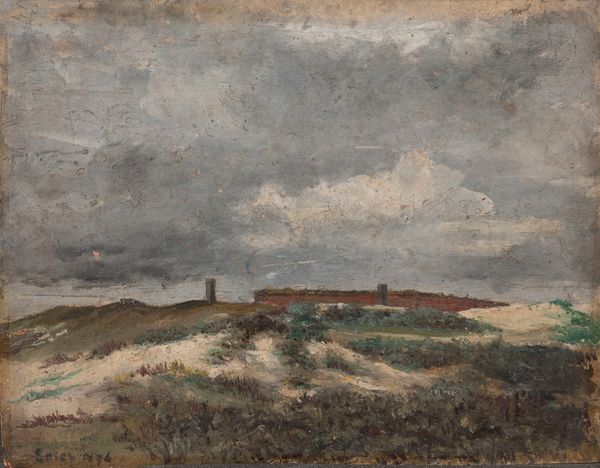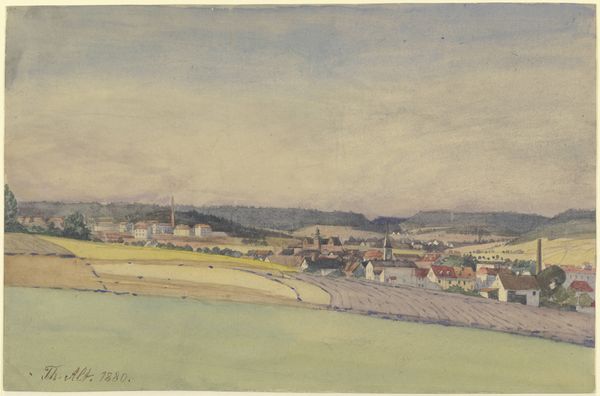
De Wellingtonrenbaan en het Royal Palace Hotel te Oostende kort na de Tweede Wereldoorlog 1945
0:00
0:00
Copyright: Public Domain: Artvee
Curator: L\u00e9on Spilliaert created this work, “De Wellingtonrenbaan en het Royal Palace Hotel te Oostende kort na de Tweede Wereldoorlog,” in 1945 using watercolour and colored pencil. Editor: My initial reaction is one of subdued melancholy. There's a tangible sense of loss and ruin; the colors are muted, and the structures in the background look scarred. Curator: The piece invites us to reflect on the consequences of conflict and social reconstruction. The ruins of the Royal Palace Hotel, situated atop a green field, serve as a powerful symbol of cultural memory. I think Spilliaert may be highlighting issues surrounding Belgian identity in the aftermath of the war, particularly when thinking about the occupation. Editor: I agree that Spilliaert subtly engages with questions of Belgian identity. But I also notice the focus on the fields, the earth, how this landscape is rendered by hand. I see a concern for materiality, in the specific application of watercolour and the repetitive use of colored pencil. These tools highlight labor—manual mark-making seems central to understanding this piece. Curator: That is such a critical reading. Viewing it with an eye toward those postwar sentiments, though, brings in considerations about trauma. Maybe the green evokes the natural resilience of land, perhaps indicating how places become witnesses to historical events and human experiences. Editor: That resonates deeply. I'm still considering how the application of watercolour relates to production. Perhaps there is something inherently destructive that can be unearthed in artistic media as well. I am left pondering if Spilliaert wanted the viewer to contemplate both literal ruins and their manifestation through more delicate means. Curator: Reflecting on the ruins portrayed and the history they evoke leads me to reconsider how national narratives intertwine with material destruction and personal memory. Thank you for these fascinating observations on materiality, as these insights truly deepen my perspective of this piece. Editor: And you've shifted my thinking too, making me see a different depth to what appears at first glance a simple landscape painting.
Comments
No comments
Be the first to comment and join the conversation on the ultimate creative platform.
